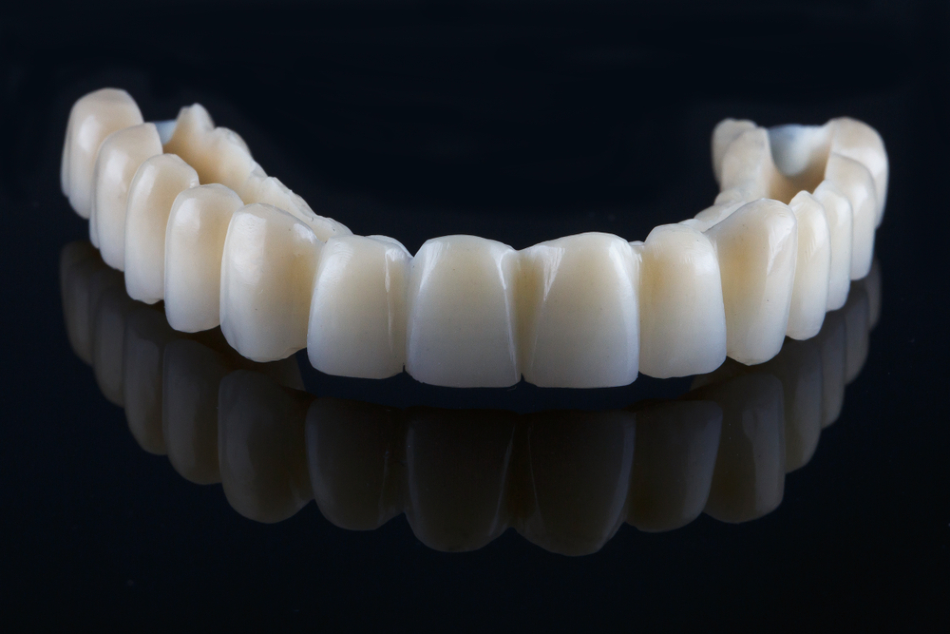
Image Credit: DenDor/Shutterstock.com
The replacement of traditional metal and alloy materials used within dentistry with biomaterials has continued to gain attention by researchers around the world. Researchers have found that polymeric materials offer excellent mechanical and biological properties that are ideal for dental applications.
An Overview of Dental Biomaterials
Traditionally, the materials used for these dental treatments are comprised of metals and alloys like titanium, stainless steel or gold-based alloys. Unfortunately, excessive exposure to these types of materials can be harmful and lead to a wide range of health effects including local irritation, nausea, vomiting and diarrhea.
To overcome these limitations, the numerous advancements within biomaterial sciences that have emerged over the past several years have revolutionized how materials are used for preventive, restorative and regenerative treatments in dentistry. In addition to eliminating potential toxicity for the patient, dental biomaterials also offer several advantages, some of which include reduced cost, increased availability, valuable mechanical properties and improved corrosion behavior.
Polymeric Materials in Dentistry
Due to their wide applicability and various advantageous properties, polymeric materials (PMs) have become increasingly incorporated into biomedical applications. Within dentistry, some of the most used PMs include polyethylene, polymethyl methacrylate, polycarbonate, polyethylene glycol, polyurethane and hexamethyldisilazane, to name a few. Notable advancements within the fields of both engineering and nanotechnology have allowed for these PMs to be tailored for specific dental requirements.
How are Polymeric Films Used in Dentistry?
Polymeric films (PMFs) are a class of PMs that have become an area of interest for many researchers who are working on ways in which the quality of materials used in dentistry can be improved. The development of these films has provided significant improvements in the antimicrobial properties of dental materials, while also enhancing the integrity of dental prosthetics and implants. Additional research on PMFs in dentistry have discovered ways in which these remarkable materials can be used as drug delivery systems.
Antimicrobial PMFs
Dental biofilms can arise as a result of the adherence of microbial organisms to teeth or implanted restorative materials. Once microbial adhesion begins, bacterial growth and colonization follow until a compact biofilm matrix is formed. Unfortunately, the presence of this protective biofilm matrix ensures the overgrowth of bacteria while simultaneously preventing antibiotics as well as any host defense mechanisms from successfully combating infections from continuing.
To prevent these infections, as well as the inevitable dental implant failure that will result from this biofilm formation, several antibacterial polymer coatings have been investigated. For example, copolymers of acrylic acid, alkylmethacrylate and/or polydimethylsiloxane, as well as pectin-coated liposomes and carbopol have been used as coatings on traditional dental varnishes to provide enhanced antibacterial protection of implanted dental materials.
Click here to find out more about the equipment designed to evaluate polymer properties.
PMFs as Drug Delivery Systems
PMs and similar nanoparticle (NP) formulations have been investigated as potential drug delivery systems for oral medications. Some of the key advantages associated with these types of bioadhesive formulations are due to their ability to protect encapsulated drugs that would otherwise be destroyed by the oral mucosa. Furthermore, these polymeric formulations can improve the retention time of loaded drugs, thereby enhancing their efficacy in treating a wide range of maladies.
Several biodegradable polymers have demonstrated their potential as drug delivery systems, some of which include chitosan, alginate, gelatin and methacrylic acid. Within the field of dentistry, various pectin-coated liposomes have been shown to retain their presence on enamel surfaces, thereby adding a protective layer for teeth enamel. Comparatively, mixtures of both polymeric micelles and antifungal agents like Amphotericin B (AmB) have been shown to reduce the systemic toxicity of these agents and increase bioavailability. While these results have been promising, it should be noted that certain limitations in the stability of these formulations exist and that these studies remain in the early stages of development.
PMFs for Dental Prosthetics
Despite the widespread use of polymethyl methacrylate (PMMA) for both medical and dental prosthetics, this material is associated with certain disadvantages, of which include a higher likelihood to experience swelling and dissolution when exposed to both organic solvents and chemicals. Furthermore, PMMA is not equipped with significant antibacterial or antifungal properties, which has prompted many researchers to investigate how certain additives may improve this property of PMMA prosthetics.
In addition to a wide variety of NPs that have been added to PMMA prosthetics, some of which include silver (Ag) NPs, platinum (Pt) NPs and zirconium oxide (ZrO2) NPs, several PMFs have also been investigated. To this end, one 2016 study found that the addition of a phospholipid polymer composed of poly(2-methacryloyloxyethyl phosphorylcholine-co-n-butyl methacrylate) (PMB) onto PMMA successfully prevented biofilm formation. This antibacterial activity was achieved by the inhibition of sucrose-dependent Streptococcus mutans (S. mutans) that normally arises on the denture base of PMMA material.
Another study found that the incorporation of Ag-NPs into polymerized PMMA was capable of destroying both gram-positive and gram-negative bacterial strains; therefore demonstrating the promise of this type of technology combination has a promising future in dentistry.
References and Further Reading
Rokaya, D., Srimaneepong, V., Sapkota, J., Qin, J., Siraleartmukul, K., & Siriwongrungson, V. (2018). Polymeric materials and films in dentistry: An overview. Journal of Advanced Research 14; 25-34. DOI: 10.1016/j.jare.2018.05.001.
Mara de Silva Avila, D., Zanatta, R. F., Scaramucci, T., Aoki, I. V., et al. (2017). Influence of bioadhesive polymers on the protective effect of fluoride against erosion. Journal of Dentistry 56; 45-52. DOI: 10.1016/j.jdent.2016.10.015.
Shibata, Y., Yamashita, Y., Tsuru, K., Ishihara, K., Fukazawa, K., & Ishikawa, K. (2016). Preventive effects of a phospholipid polymer coating on PMMA on biofilm formation by oral streptococci. Applied Surface Science 390; 602-607. DOI: 10.1016/j.apsusc.2016.08.108.
Disclaimer: The views expressed here are those of the author expressed in their private capacity and do not necessarily represent the views of AZoM.com Limited T/A AZoNetwork the owner and operator of this website. This disclaimer forms part of the Terms and conditions of use of this website.